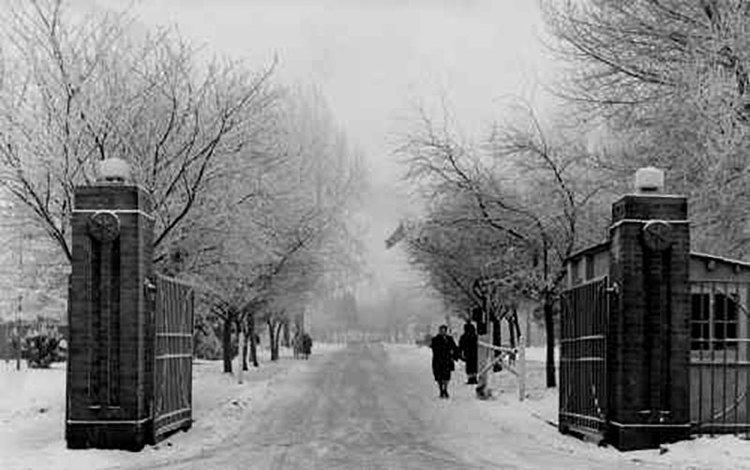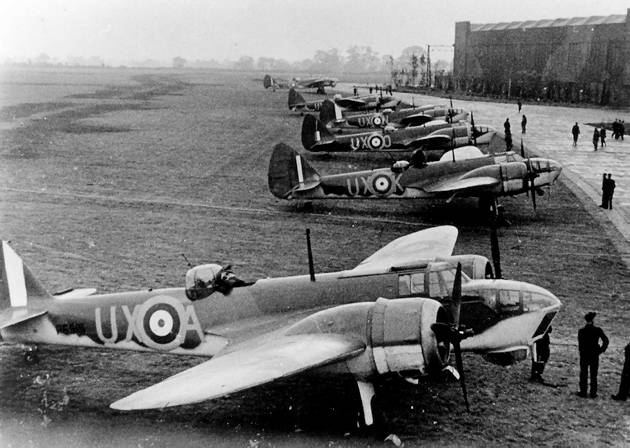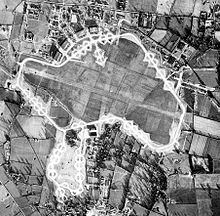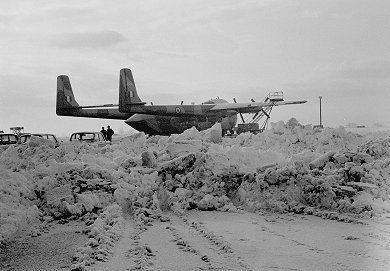Elevation 57 m | Battles/wars Second World War Year built 1937 | |
 | ||
In use 1937-1978 or 1992 (1992). Occupants 25th Bombardment Group (Reconnaissance) Occupant 25th Tactical Reconnaissance Wing Garrisons | ||
Raf watton mod police
Royal Air Force Station Watton or more simply RAF Watton is a former Royal Air Force station located 9 mi (14 km) southwest of East Dereham, Norfolk, England.
Contents
- Raf watton mod police
- RAF Bomber Command use
- USAAF use
- 3rd Strategic Air Depot
- 25th Bombardment Group Reconnaissance
- Postwar RAF use
- Current use
- References

Opened in 1937 it was used by both the Royal Air Force (RAF) and United States Army Air Forces (USAAF) during the Second World War. During the war it was used primarily as a bomber airfield, being the home of RAF Bomber Command squadrons until being used by the United States Army Air Forces Eighth Air Force as a major overhaul depot for Consolidated B-24 Liberator bombers and as a weather reconnaissance base.

After the war, it was returned to RAF use until being turned over to the British Army in the early 1990s. It was closed then put up for sale.

RAF Bomber Command use

RAF Watton was a permanent RAF station built by John Laing & Son in 1937, and first used as a light bomber airfield housing for varying periods by RAF Bomber Command.
The following squadrons and units were based at Watton at some point during this time:

USAAF use

In 1943 Watton was turned over to the United States Army Air Forces Eighth Air Force for use as an air depot. The airfield was originally grass surfaced but, during the American tenure, the airfield had a 2,000 yd (1,829 m) long concrete runway constructed. A concrete perimeter track was built and a total of fifty-three hardstandings, of which forty-one were spectacle and twelve of the frying-pan type. The four original C-type hangars, arranged in the usual crescent on the northern side of the airfield, were backed by the permanent buildings of the pre-war RAF camp. Additional hangars were added and three blister hangars at dispersals. The construction of the airfield necessitated the closure of two public roads.
Watton was given USAAF designation Station 376.
3rd Strategic Air Depot
Under the American tenancy, Watton was expanded to become the 3rd Strategic Air Depot, which was the major overhaul and repair of the Consolidated B-24 Liberators of the 2nd Air Division. The air depot complex was adjacent to Watton airfield and built in the village of Griston to the south, bordering the B1077 road. However, the depot was known officially as Neaton, given USAAF designation Station 505, a village located to the north of Watton town.
The 3rd Strategic Air Depot remained operational until the American departure in July 1945.
25th Bombardment Group (Reconnaissance)
Watton was also the home of the 25th Bombardment Group (Reconnaissance) which was formed at Watton as the 802nd Reconnaissance Group in February 1944. The unit was renamed the 25th on 9 August 1944.
Its operational units were:
The 652d Bomb Squadron originated as a provisional weather reconnaissance unit that was formed at RAF St Eval in Cornwall with Boeing B-17 Flying Fortresses on 8 September 1943 for conducting meteorological fights over the Atlantic Ocean. In November 1943 the unit moved to RAF Bovingdon after flying 231 weather sorties. At Bovington, the squadron was reorganized as the 8th Weather Reconnaissance Squadron on 28 March 1944, then transferred to Watton on 12 April 1944.
The 653d and 654th Bomb Squadrons were established at Watton on 12 April for special weather reconnaissance missions over enemy-occupied territory in advance of bomber formations and visual coverage of target strikes. Pilots for the Mosquitos came from former Lockheed P-38 Lightning pilots of the 50th Fighter Squadron transferred from the 342d Composite Group based in Iceland.
From Watton the 25th continued weather flights over the waters adjacent to the British Isles and occasionally to the Azores to obtain meteorological data along with night photographic missions to detect enemy activity; and daylight photographic and mapping missions over the Continent.
Also, the group occasionally engaged in electronic-countermeasure missions in which chaff was spread to confuse enemy defences during Allied attacks.
The 25th Bomb Group moved to Drew AAF, Florida during July–August 1945 and was inactivated on 8 September 1945. The group flew a total of 3,370 sorties for the loss of 15 aircraft.
Postwar RAF use
After the war, Watton reverted to RAF control on 27 September 1945. It was used by various flying units of RAF Signals Command, No. 199 Squadron RAF, for example being based at Watton in the early 1950s with Mosquito NF36s operating with the Central Signals Establishment, and in 1953 116 Squadron operated with Avro Lincolns, a Hasting and a number of MkII Avro Ansons. The last three Lincolns serving with No. 151 Squadron on signals duties were withdrawn in March 1963.
The following squadrons and units were based at Watton at some point during this time:
By the 1970s, the aircraft at Watton had been replaced by technology and, at the beginning of 1973, the Matelo system of HF communication was supplied to Strike Command by Marconi Communications Systems.
In 1969, 1970, 1989 and 1990 RAF Watton was the location of the annual Royal Observer Corps summer training camps when up to 400 observers per week attended specialist training. For the latter two years Watton had already closed for active RAF use and was on a care and maintenance basis, temporary support catering and security staff being drafted in from nearby stations to support the ROC presence.
With the installation of secondary surveillance radar (SSR) at Watton, the station became one of the five units in the joint military/civil National Air Traffic Services Organisation with Eastern Radar until the 1980s. Then in the 1990s, the airfield came into use by the Army in connection with the nearby Stanford Training Area (STANTA).
Part of the camp put up for sale in 1995 was sold to a developer for the creation of a new housing estate. Three of the type C hangars were used for grain stores for some years, prior to their demolition, which now leaves only one partially remaining.
The site was home to 611 VGS (Volunteer Gliding Squadron) flying Viking Gliders for the Air Cadet Organisation. 611 VGS ceased operations in April 2012, following the sale of most of the airfield to private landowners.
Current use
A large part of the site has been developed into the Blenheim Grange housing estate, which is actually officially part of Carbrooke. All of the roads are given names with links to air force history, such as Wellington Road and Canberra Road. History has not been forgotten on the estate and at the entrance there are two monuments, one is a propeller in memory of the British airmen and the other is a more traditional monument in memory of the Americans.
The Runway is still mostly in place (apart from an area that has been taken up and a footpath to Griston has been built) at the top end of the estate and the area is set to become agricultural land. A large part of the estate is still to be developed and in many places you can still see signs with wording similar to "RAF property keep out".
